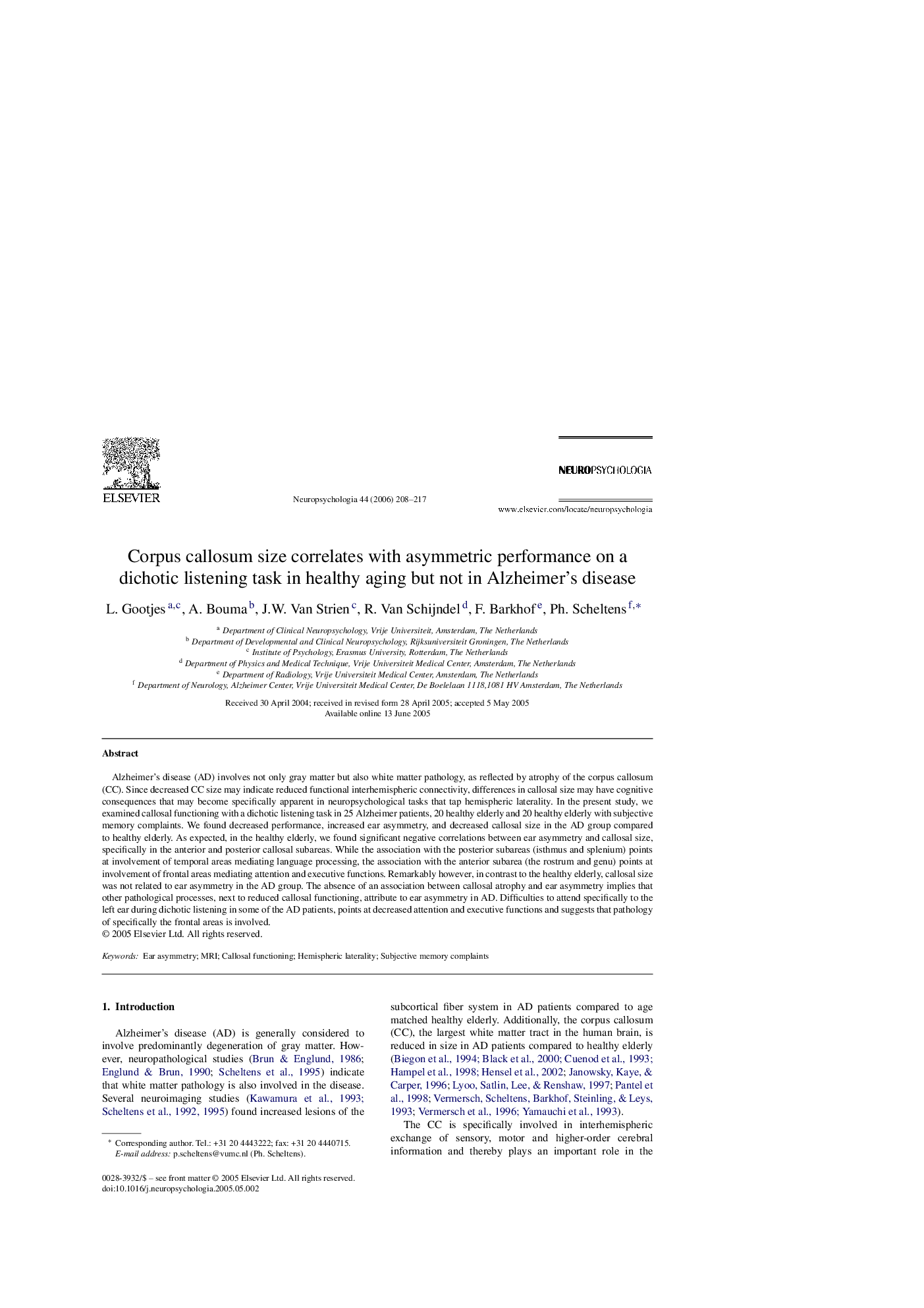| Article ID | Journal | Published Year | Pages | File Type |
|---|---|---|---|---|
| 945737 | Neuropsychologia | 2006 | 10 Pages |
Alzheimer's disease (AD) involves not only gray matter but also white matter pathology, as reflected by atrophy of the corpus callosum (CC). Since decreased CC size may indicate reduced functional interhemispheric connectivity, differences in callosal size may have cognitive consequences that may become specifically apparent in neuropsychological tasks that tap hemispheric laterality. In the present study, we examined callosal functioning with a dichotic listening task in 25 Alzheimer patients, 20 healthy elderly and 20 healthy elderly with subjective memory complaints. We found decreased performance, increased ear asymmetry, and decreased callosal size in the AD group compared to healthy elderly. As expected, in the healthy elderly, we found significant negative correlations between ear asymmetry and callosal size, specifically in the anterior and posterior callosal subareas. While the association with the posterior subareas (isthmus and splenium) points at involvement of temporal areas mediating language processing, the association with the anterior subarea (the rostrum and genu) points at involvement of frontal areas mediating attention and executive functions. Remarkably however, in contrast to the healthy elderly, callosal size was not related to ear asymmetry in the AD group. The absence of an association between callosal atrophy and ear asymmetry implies that other pathological processes, next to reduced callosal functioning, attribute to ear asymmetry in AD. Difficulties to attend specifically to the left ear during dichotic listening in some of the AD patients, points at decreased attention and executive functions and suggests that pathology of specifically the frontal areas is involved.
